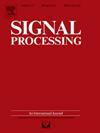Two-stage reversible data hiding in encrypted domain with public key embedding mechanism
IF 3.4
2区 工程技术
Q2 ENGINEERING, ELECTRICAL & ELECTRONIC
引用次数: 0
Abstract
Reversible data hiding in encrypted domain (RDH-ED) can perform encryption and data embedding to simultaneously fulfill the privacy protection and access control. The key distribution in current RDH-ED primarily follows a symmetric mechanism, resulting in limitations in key management and distribution. Therefore, public-key embedding (PKE) mechanism in RDH-ED is proposed to address the limitations, where embedding permission is open to the public while extracting is under control. Then a two-stage RDH-ED scheme with PKE mechanism is designed based on learning with errors (LWE) for images. The algorithm of the first stage is redundancy recoding in LWE encrypted domain (RR-LWE) for the ciphertext encrypted from any a pixel bit. Public embedding key is specially constructed. bits data could be embedded per ciphertext. The algorithm of the second stage is difference expansion in LWE encrypted domain (DE-LWE) for the ciphertext of the entire image following RR-LWE. It transfers the bit operations of DE from spatial domain into LWE encrypted domain. We theoretically deduce the necessary conditions for embedding correctness and security. Experimental results demonstrate the outperformed effects in security and efficiency of the proposed algorithms. RR-LWE achieves an embedding capacity up to 24 bits per pixel (bpp) and DE-LWE further enhances that by approximately 0.5 bpp.
求助全文
约1分钟内获得全文
求助全文
来源期刊

Signal Processing
工程技术-工程:电子与电气
CiteScore
9.20
自引率
9.10%
发文量
309
审稿时长
41 days
期刊介绍:
Signal Processing incorporates all aspects of the theory and practice of signal processing. It features original research work, tutorial and review articles, and accounts of practical developments. It is intended for a rapid dissemination of knowledge and experience to engineers and scientists working in the research, development or practical application of signal processing.
Subject areas covered by the journal include: Signal Theory; Stochastic Processes; Detection and Estimation; Spectral Analysis; Filtering; Signal Processing Systems; Software Developments; Image Processing; Pattern Recognition; Optical Signal Processing; Digital Signal Processing; Multi-dimensional Signal Processing; Communication Signal Processing; Biomedical Signal Processing; Geophysical and Astrophysical Signal Processing; Earth Resources Signal Processing; Acoustic and Vibration Signal Processing; Data Processing; Remote Sensing; Signal Processing Technology; Radar Signal Processing; Sonar Signal Processing; Industrial Applications; New Applications.
 求助内容:
求助内容: 应助结果提醒方式:
应助结果提醒方式:


